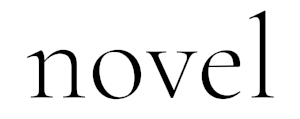An Artist to Watch: Ellen Rutt
Four times a year, Novel proudly publishes ALIVE Magazine. This quarterly book serves as an ode to the groundbreaking artists living and working in the heartland of America. We travel throughout the central corridor of the United States in search of new voices in visual art, poetry, dance, music, food, design and more.
Our photographers at Novel, notably our co-founder Attilio D’Agostino, capture these creatives in their most intimate spaces venturing into their homes and studios to truly tell their stories. Our writers sit down with these artists and weave the tales of their creative journeys.
Read on to experience one of our recent interviews and fashion collaborations, published in Issue 2 2019 of ALIVE.
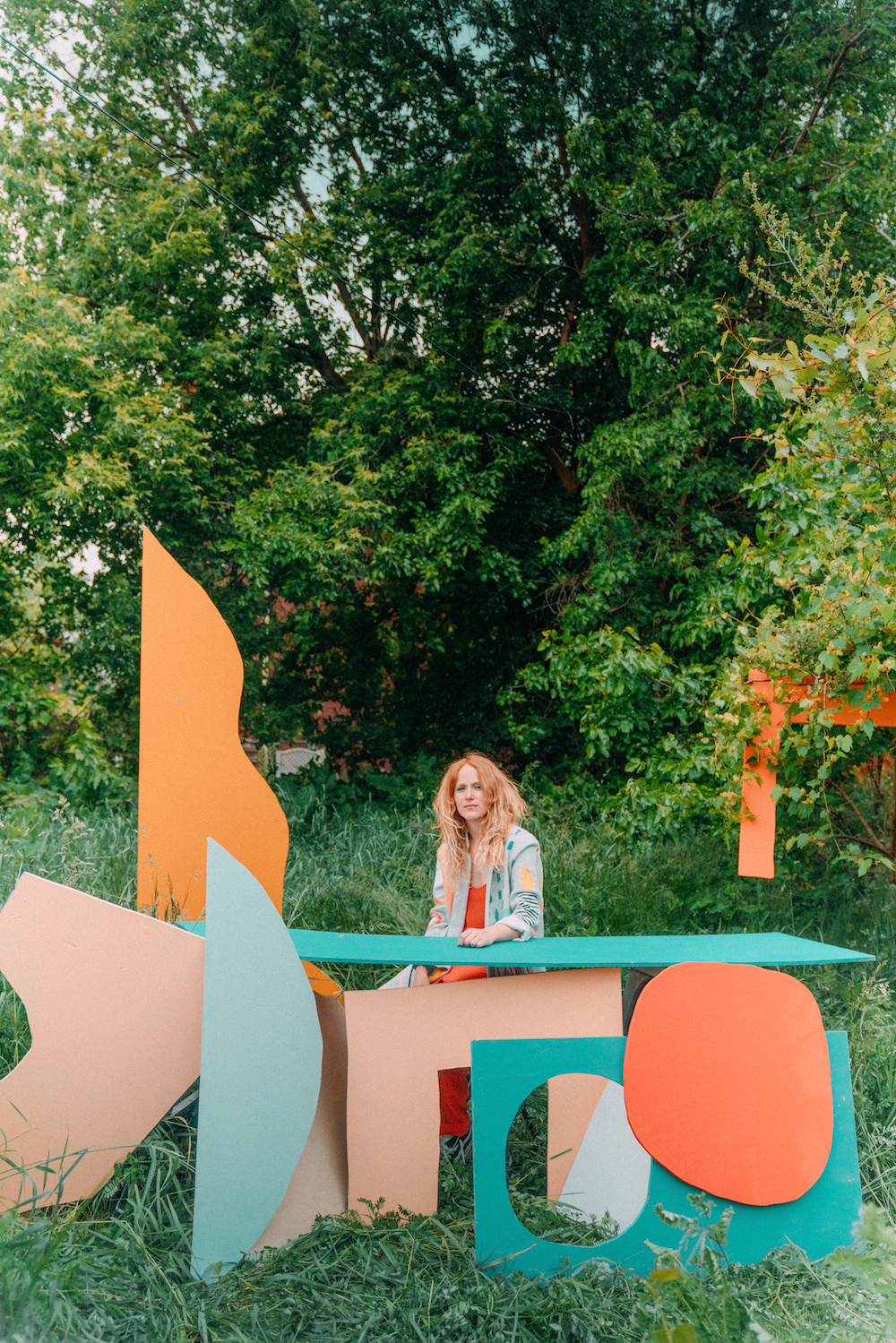
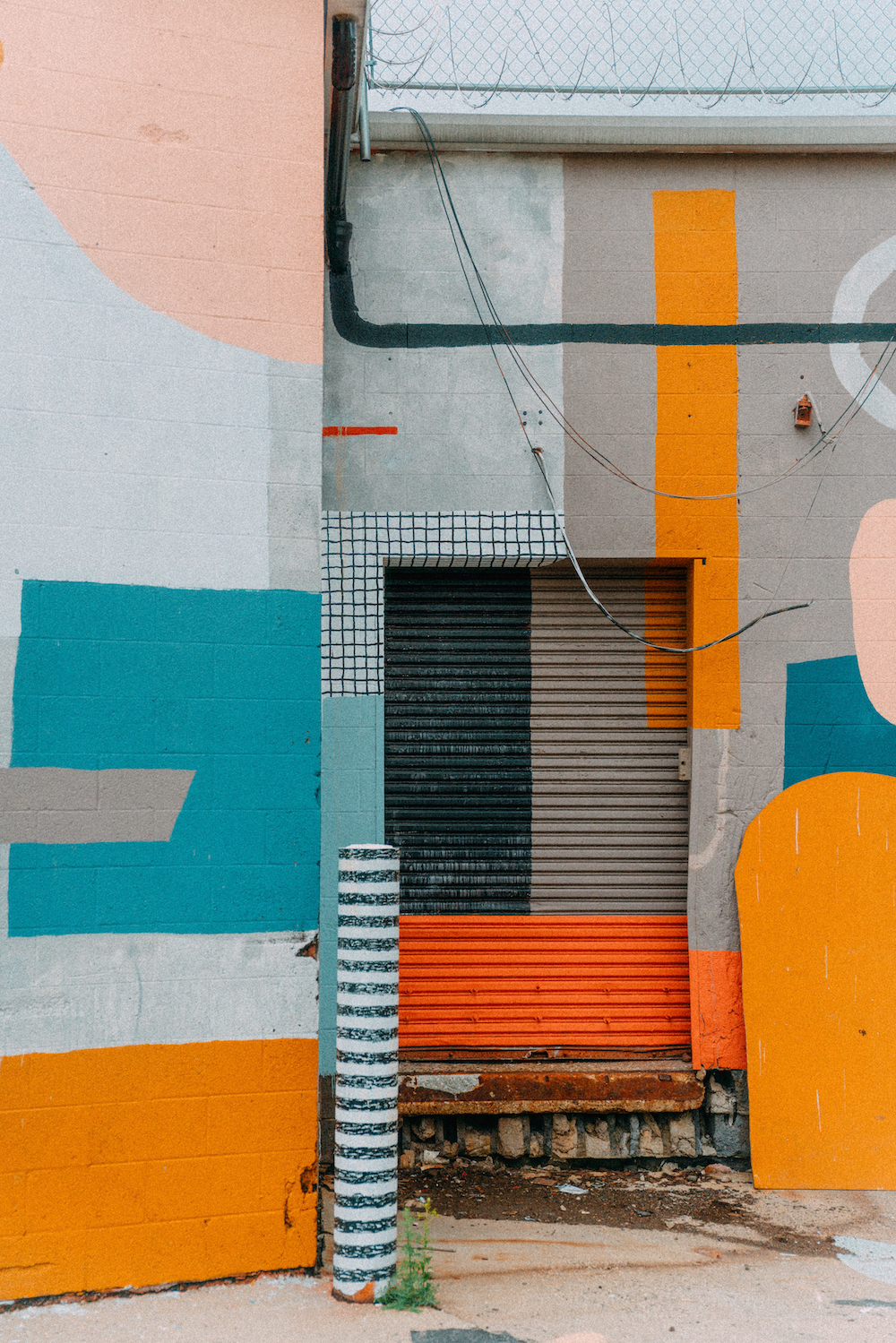
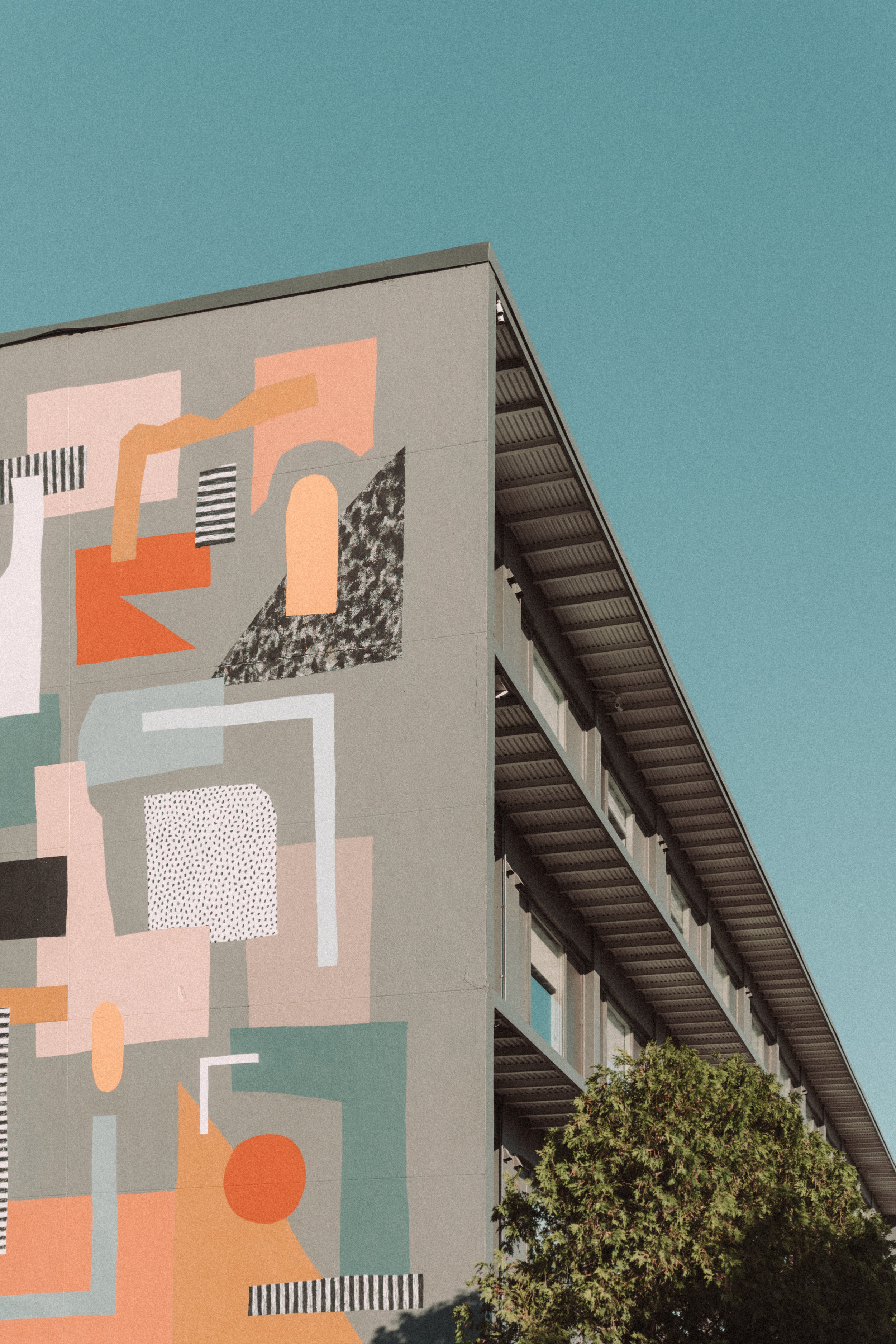
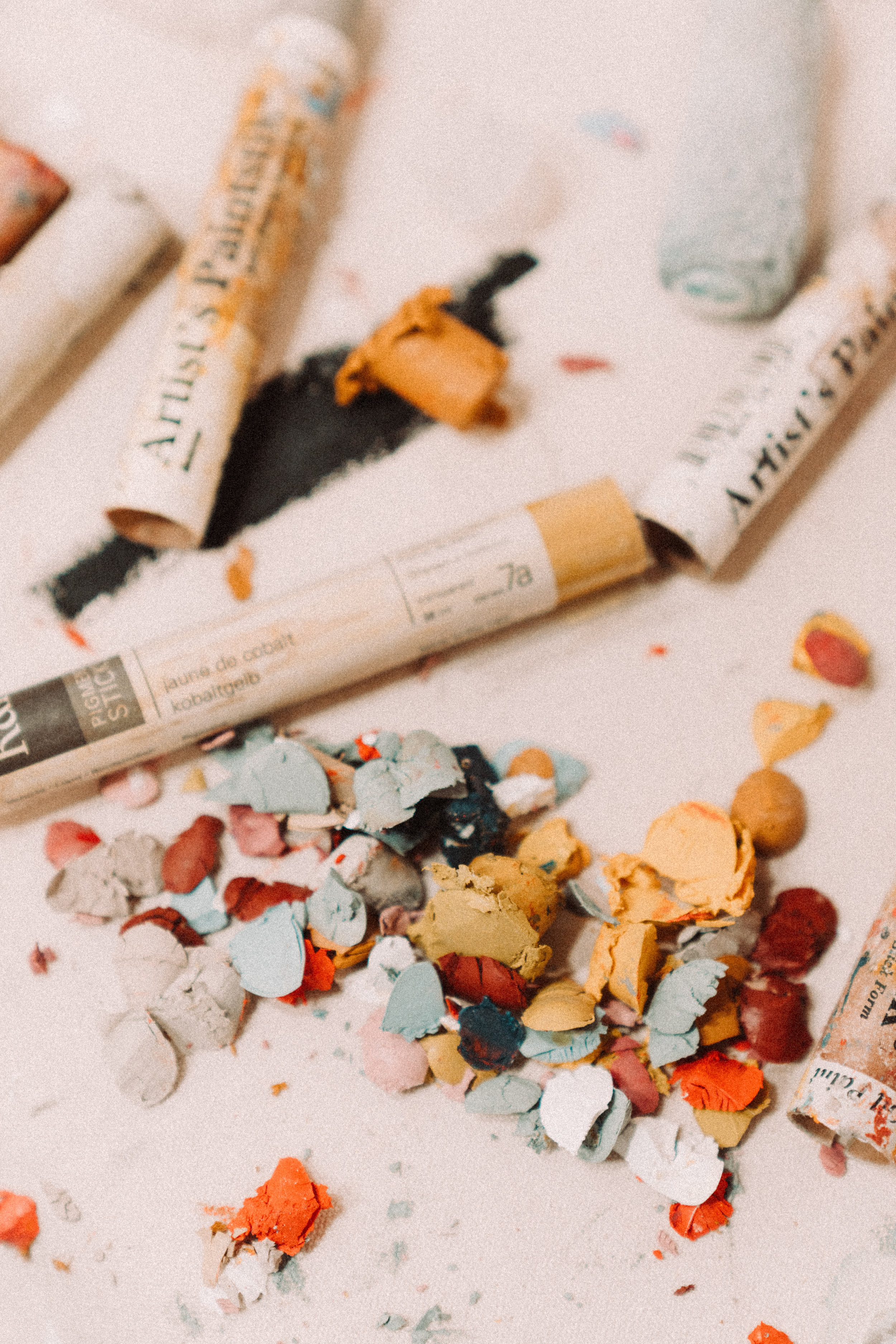

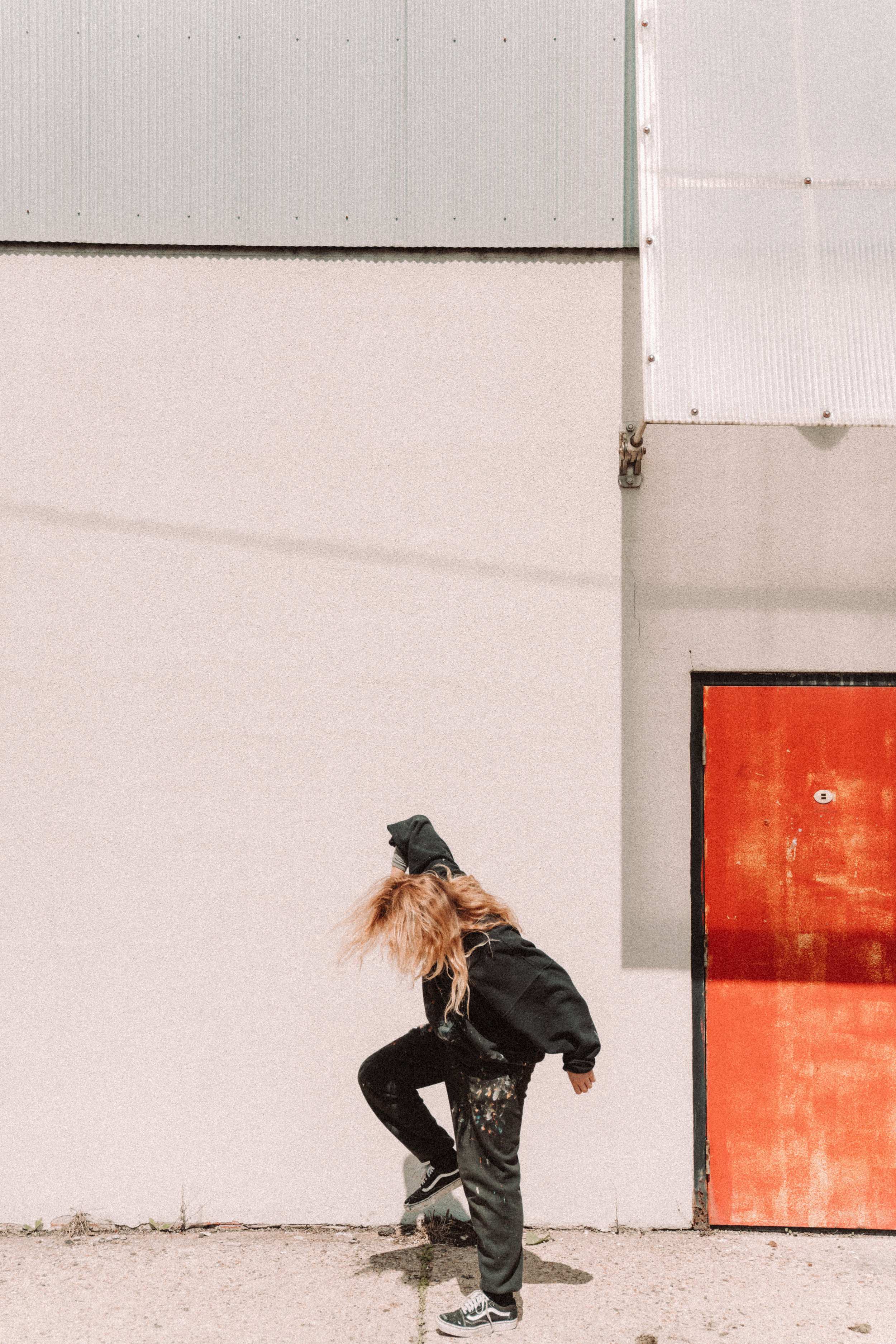
Anything That Can Be Painted: The Singular Voice of Mixed-Media Artist Ellen Rutt
What won’t Ellen Rutt paint?
When you ask this question of Rutt herself, she repeats it a few times, considering it carefully. “I think I would paint almost anything,” she says, finally, with an air of, ‘But isn’t this obvious?’
“Yeah. Any surface that could be painted, I am down.”
When you look at Rutt’s portfolio, it’s equally obvious that she’s not kidding around. The Detroit-based mixed-media artist has painted murals in Saint-Nazaire, France, and underpass supports beneath Cleveland highways. She has covered urban basketball courts in graphic pastels and, in Michigan, the shop window of a Madewell retail store in energetic abstract silhouettes. Even when she’s not painting, the cheeky, pop-art shape language of Rutt’s primary medium keeps appearing in her work: stitched on throw pillows, printed on sweatshirts, stamped onto eyeglass cloths that wink back when you polish your lenses. She’s the kind of maker whose vision is so singular that it verges on a brand—and strong brands, as we know, can shape virtually every element of our reality.
How do you create a voice as unique as that? What kind of person can create a visual identity flexible enough to be blown up to building-size or shrunk down to fit in a frame hung on a bedroom wall?
If you asked Rutt those questions, she may not have an answer for you. She’s a humble, clear-spoken presence whether she’s talking about a commission she did for a Fortune 500 company or her childhood in the Detroit suburb of West Bloomfield. That child- hood, as she describes it, was a fairly ordinary one, if a little more creatively nurturing than most. Rutt’s mother works at Waldorf school—you know, the one where all the kids make beeswax sculptures and tell folktales during circle time and do something called eurythmy instead of P.E. class. Rutt attended throughout elementary and middle school.
“It’s so cliché to say, ‘Oh, I was an artist since I was a child,’ but I feel like I probably was,” Rutt says. “I had an education that takes a more holistic approach to learning through hands-on making, and art was integrated into many aspects of that particular pedagogy. So I was farming and gardening and painting and making things and cooking all throughout my childhood as part of school. That creative part of me was always being nurtured.”
And then high school rolled around, and Rutt enrolled in public school. It wasn’t exactly a smooth transition.
“Everything was totally standardized, and I was just nobody,” she says. “I was so awkward. It was a very important thing for me to experience. It was fucking awful, but I’m really glad it happened.”
In a way, you can still feel traces of these formative years in Rutt’s adult work. After spending her childhood in a classroom alongside 12 kids who she says were “like family,” and then leaving them behind, she turned to making work populated by a tiny handful of familiar, comforting shapes: a connected row of triangles that evoke a kindergartner’s construction-paper crown, Keith Haring-esque squiggles and friendly rhomboids.
“Through shapes, I’m able to say more than by always being literal,” Rutt muses. “The way a round, blobby shape meets an angular shape—to me, these things embody qualities. So one shape might be short and pointy; that’s me after I’ve had too much coffee that day and I’m just so anxious and sharp. Others are sort of loose and round. In a way, they are like characters.”
What’s most intriguing about Rutt’s work is how she uses that shape-language to articulate most anything that she likes. When she studied visual art at the University of Michigan—mostly for the financial aid package, she says—she was more attracted to conversations with neuroscience majors or burgeoning environmental scientists. She started bringing those conversations back into her studio, experimenting with context and collage to evoke complexity.
After university, Rutt might have launched straight into the kind of intellectually curious, medium-spanning career she has now. But like a lot of young American artists, she had to make a financially necessary detour first—into a windowless cubicle.
“My whole life I would say, ‘I’m never going to work a nine-to-five. I’m never going to work in a cubicle. I’m never going to have to do that!’” Rutt says. “And then I graduated from college, and I was working freelance, but I just didn’t have any of the internal or external support systems to make that work. I didn’t have the self-discipline. I was smoking way too much weed. I didn’t have connections. It was tough. And I’d moved to Detroit—a city filing for bankruptcy at the time. Who had money to pay for me to aestheticize their business? I don’t know what I was thinking.”
Rutt took a job as an art director at an ad agency, designing what she describes as “home-security company brochures and ham-themed products for a meat company—and I was a vegetarian.” She could finally pay her rent, but she had trouble finding the energy at the end of the day to devote to her own work. “Finally I thought, ‘I either let this job take away everything that I value, or I don’t,’” Rutt says.
“The question really was, ‘How can you be a person who you like in a situation that you hate? How can you not let it drain you?’ It’s such a gift to be able to say, ‘No, I will wake up every day extra early, so when I’m really fresh I can do some stuff before work,’ or ‘Here are the friends that I just have to let go if I really want to make art still, because they want to go to the bar and I just don’t have time to do it all.’”
That hard lesson in commitment paid off in 2015, when Rutt was offered a job at Detroit’s Murals in the Market festival. It was only part time, and it came with a huge pay cut. But she saw an opportunity. “They had approached me right around the time that it felt like all my projects at this job were starting to wrap up, and I could either be put on more jobs or not,” Rutt says, “That was the moment when I was like, ‘Man, this is my exit. I see it really clearly.’”
There’s something distinctly millennial about Rutt’s story. If that sounds like an insult, you don’t know her generation. Because when she took that leap out of the ad agency and into a more tenuous life of a freelancer with a part-time job as her only financial anchor, Rutt began hustling in a way that’s hard to understand if you didn’t come of age in the wake of a global financial crisis. That hustle is hard and self-sacrificing, but what makes it unique to this generational moment is that it is not indiscriminate, even in moments of desperation. Rutt has been working not just to make a paycheck through art that can sustain her needs, but also to make the kind of art that challenges the systems that make the project of survival so dire in the first place.
Rutt has helped paint murals that proclaimed “Do Not Bid!” on the side of recently foreclosed homes visible to anyone who showed up for the auction. She has composed collages of diverse Detroiters interacting with swarms of her signature shapes, a project she described to journalists as a call for inclusivity in a town where fairness too often fractures along racial lines. Even as Rutt’s work has grown less representational, she is acutely sensitive to political questions that surround the act of art-making and the ethical imperative behind even the most abstract work.
How else could you make public art in a city like Detroit?
“I think context for murals plays a huge role,” Rutt says. “In Times Square, if you were going to [paint a mural], it’s going to be for tourists. But when you make something in Detroit, there are so few tourists here that you really are making work for the people who live around it. So I think that it is my responsibility as an artist to not undermine the systems of belonging that exist here, that I am aware of who it is I’m speaking to.”
But even when Rutt’s work takes her far from the city she loves, she still has something to say. That’s the thing about a voice as unique as hers: it keeps speaking and speaking and speaking.
Perhaps one of Rutt’s most inspiring projects to date is “Nothing is Separate.” It was originally envisioned as a mural in Hilo, Hawaii, where Rutt was invited to attend the Temple Children artist residency. But the project fell through; the owner of the building she was meant to paint stopped responding to her emails, and she couldn’t secure an alternative space.
A muralist can’t work without a wall—but Rutt isn’t just a muralist.
She found some scrap wood in a shed at the back of the artist residency, and she started to paint. Shapes that had been with her for years—sharp, anxious triangles and grinning hemispheres, in the signature colors she’s painted on surfaces from Soho to Saint-Nazaire—found their way back into her artistic palette. Rutt decided she would take these shapes and haul them with her to the places all over the island “to make these impromptu compositions in the landscape, responding to that landscape, using the environment to sort of collage in space and time.”
It was hard, physical work, sweating up mountainsides in the Hawaii sun. Rutt didn’t use any screws or nails to hold the shapes in place—only gravity and balance, carefully studying the contours of the geography she intended to augment. What she created looks anything but happenstance: elegantly composed murals in places where there will never be walls, on beaches and in the depths of glens, Technicolor forms leaning up against ancient-looking trees. The only thing more impactful than the project itself is the knowledge that, when the day was done—the shapes were packed up and hauled off again—the natural landscape was restored.
What won’t Ellen Rutt paint?
“I think it’s more a question of who I won’t paint for,” she says. “I don’t think I would paint for McDonald’s. I don’t think I would paint for the corporations who I think are contributing negatively to the quality of life for future generations. The more I work, the more clear I am about who I would prefer to say no to.”
It’s not hard to picture her carrying that ethos into whatever adventure comes next, loaded on her back if she needs to, and trekking as high as she can climb.
A fashion story conceived and created in collaboration with Ellen Rutt was published alongside this story. Find the full story in Issue 2. See more of Attilio D’Agostino’s photography work for Novel.
CREDITS
Garments: Ellen Rutt (ellenrutt.com)
Photography: Attilio D’Agostino
Stylists: Ellen Rutt and Cole Davis
Models: Cole Davis and Uribi Alexandra
Assistant: Hannah Verity
Story by: Kea Wilson
Edited by: Rachel Brandt
